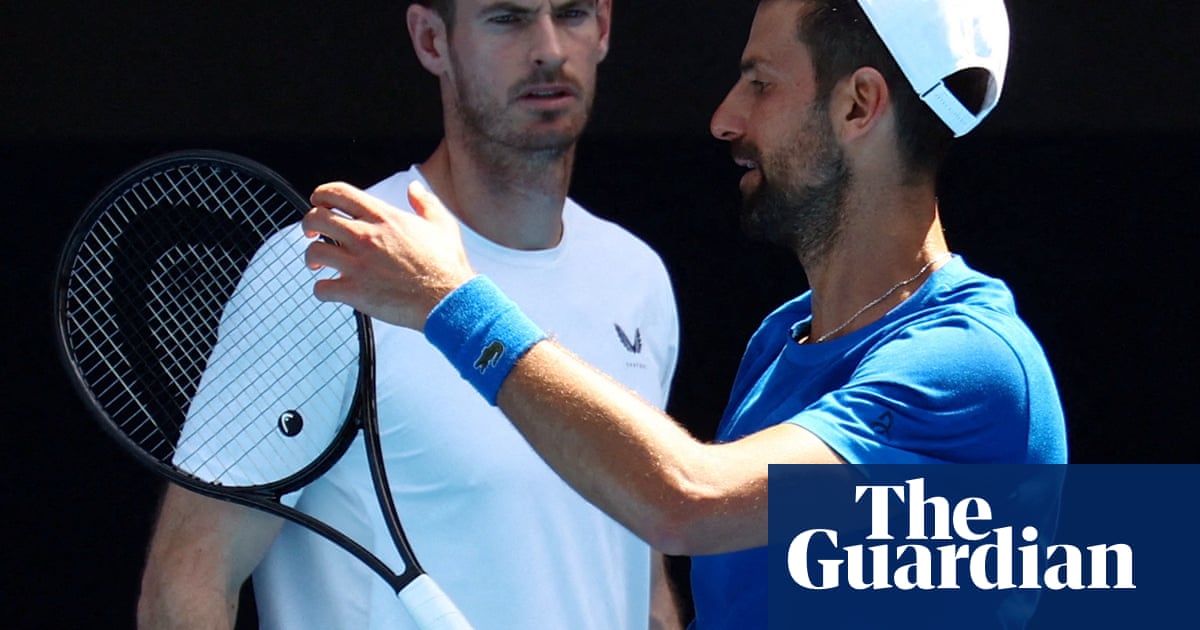In the echoing surroundings of an empty Margaret Court Arena before the Australian Open in January,Novak Djokovicand Andy Murray were working through their first training session at an official tournament together. Aside from the sweet sound of tennis balls being struck between Djokovic and Carlos Alcaraz, his training partner for the day, the only audible noise was the communication between Djokovic and Murray. Their technical and tactical discussions were constant.
It was a fascinating sight. After years of playing against and trying to outsmart each other from across the net, they were now charged with understanding their distinct perspectives and figuring out the best solution to ensure that Djokovic was ready to continue competing for the biggest titles in the world. They both seemed genuinely hopeful over the opportunity to work so closely together, energised by their shared greatness.
The early signs were positive. Despite hurting his hamstring before his quarter-final match against Alcaraz, Djokovic still pushed himself to his limits andclosed out an incredible win. He played a spectacular match, crunching his forehand and dominating against one of the best players in the world. He celebrated it by walking directly to Murray and hugging his new coach. When asked about Murray, as has been the case countless times over the past five months, Djokovic was effusive in his praise for the Scot’s professionalism and passion.
That honeymoon period did not last long. It is reflective of Djokovic’s recent struggles thathis announcement of their coaching splitcomes as little surprise in the midst of one of the most barren stretches of his 22-year career.
The final days of their time working together have been particularly dire. After early defeats by players such as Alejandro Tabilo and Matteo Arnaldi in Monte Carlo and Madrid, Djokovic has lost three matches in a row and he described himself as entering a “new reality” following his latest defeat.
Having spent his career starting tournaments with the expectation of winning each one, in recent weeks Djokovic has arrived at those same events merely hoping to win a single match. Despite how low he set the bar, he still could not clear it.
Thirty-seven has been a difficult agefor many great tennis players, usually one obstacle too far. In some ways the deterioration of Djokovic’s form has been gradual, with the Serb struggling for much of the 2024 season even though he managed to push himself in some of the biggest events, including winning a career‑completingsingles gold medalat the Paris Olympics. Still, the sight of him being picked off in the opening rounds at Masters events has been shocking.
For Murray, the dissolution of his partnership with Djokovic may well feel like a reprieve. Months after his own retirement at the Paris Games, Murray had been leaving the golf course, a place he had spent much of his time since the end of his career, when he realised he had missed a call from Djokovic. Murray had no intention of returning to tennis so soon, but the opportunity to work with Djokovic was too fascinating to turn down. Suddenly, he was back on the tour. He spent a month in Australia, four weeks in the US for Indian Wells and Miami, and then he was in Madrid. He has invested a lot of his time in this partnership, but the benefits have been minimal.
In both Monte Carlo and the Madrid Open, some of Djokovic’s practice sessions did not seem productive. As he has struggled to find his game on the practice court, let alone in matches, he has been in a dour mood. A video of one such training session in Madrid showed Djokoviccursing the sport in Serbianwhile Murray handed him a pair of tennis balls. “Fuck sport, fuck tennis, fuck everything else,” Djokovic said. Murray probably did not need a translator to understand his charge’s perspective.
Sign up toThe Recap
The best of our sports journalism from the past seven days and a heads-up on the weekend’s action
after newsletter promotion
This coaching split further reinforces that Djokovic has reached another significant moment in his career, a tipping point. He has achieved everything in the sport and has enjoyed a career that was once beyond the realms of any aspiring player’s imagination. As tennis reaches the busiest part of its calendar, with Roland Garros, Wimbledon and then even the US Open on the horizon, there will be nowhere to hide. If he continues his recent form and endures further early defeats in the biggest events, he will have to seriously consider his future.
Next week, Djokovic will attempt to halt the momentum against him as he takes a wildcard into the Geneva Open, a small ATP 250 event that takes place on the eve of the French Open.
All eyes will be on him to see how he fares, and indeed, who he will trust to follow him as he tries to extend the final stretch of his long, unforgettable journey.
